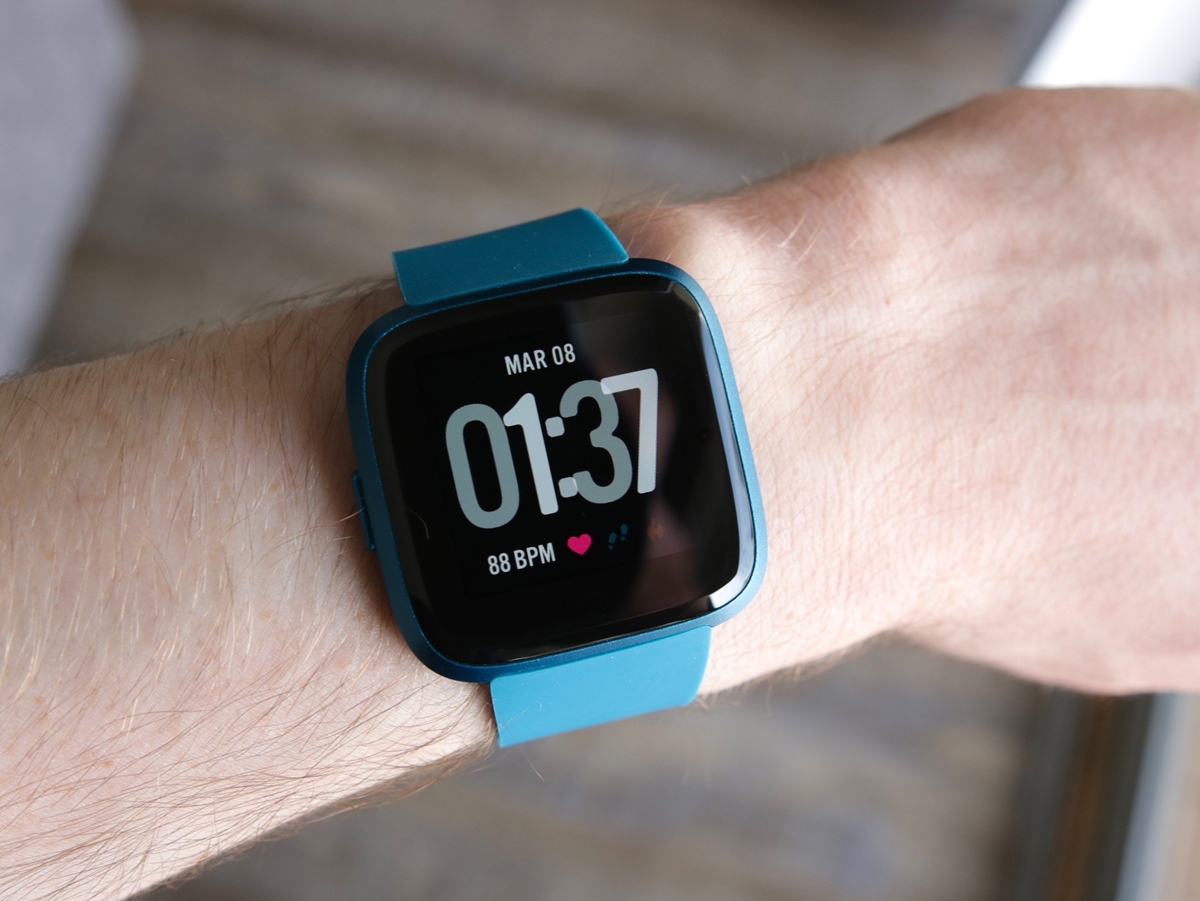

Featured
What Is High Interval Cycling Training
Modified: January 2, 2024
Discover the benefits of featured high-intensity interval training (HIIT) biking and how it can elevate your fitness levels. Maximize results with this effective workout technique.
Introduction
Welcome to the world of high interval training biking! If you’re looking for a challenging and effective way to get fit and improve your cardiovascular health, high interval training biking might just be the perfect solution for you. This popular exercise method has gained immense popularity in recent years, thanks to its numerous benefits and effectiveness in achieving fitness goals.
High interval training biking, also known as HIIT biking, combines the best elements of cardiovascular exercise and interval training to provide a highly intense and efficient workout. Unlike traditional steady-state cardio workouts, HIIT biking involves alternating between high-intensity bursts of exercise and short periods of rest or lower-intensity activity.
The concept behind high interval training biking is simple yet incredibly effective. By pushing your body to its maximum capacity during intense intervals, you not only burn more calories during the workout but also continue to burn calories long after you’ve finished exercising. This is known as the “afterburn effect” or excess post-exercise oxygen consumption (EPOC). Additionally, HIIT biking helps improve aerobic and anaerobic fitness, boost metabolism, increase endurance, and enhance overall cardiovascular health.
Beyond the physical benefits, high interval training biking offers a variety of advantages that make it an attractive workout option. First and foremost, HIIT biking is time-efficient. With busy schedules and limited time for exercise, HIIT allows you to get an effective workout in a shorter period. You can achieve greater results in less time compared to traditional steady-state cardio workouts.
Furthermore, high interval training biking can be tailored to your fitness level and goals. You can adjust the intensity, duration, and frequency of the intervals to suit your needs. Whether you’re a beginner looking to improve your fitness level or an experienced athlete aiming to enhance performance, HIIT biking can be customized to challenge and push you towards your goals.
So, if you’re ready to take your fitness journey to the next level, high interval training biking could be the perfect option for you. In the following sections, we’ll delve deeper into the specifics of HIIT biking, the benefits it offers, how to get started, sample workouts to try, safety tips to keep in mind, and more. Get ready to pedal your way to a fitter and healthier you!
What is High Interval Training Biking?
High interval training biking is a form of exercise that combines the cardiovascular benefits of biking with the intensity and effectiveness of interval training. It involves alternating between periods of high-intensity cycling and active recovery or rest. These intense bursts of effort followed by short periods of recovery help elevate your heart rate, increase calorie burn, and improve overall fitness.
During a high interval training biking workout, you’ll push yourself to your maximum capacity during the intense intervals. This can involve increasing your speed, resistance, or both. The goal is to raise your heart rate significantly and challenge your muscles. The active recovery periods allow you to catch your breath, lower your heart rate, and prepare for the next intense interval.
One of the key advantages of high interval training biking is that it can be adapted to suit different fitness levels and goals. If you’re just starting, you can begin with shorter intervals and moderate intensity. As you become more comfortable and fit, you can gradually increase the duration and intensity of the intervals. This versatility makes high interval training biking accessible to people of all fitness levels and ensures continuous progress.
The intensity and duration of the intervals can vary depending on your fitness level and personal preferences. High-intensity intervals typically last between 20 seconds to 2 minutes, followed by a recovery period of approximately equal or slightly longer duration. The specific ratio of work to rest will depend on your fitness level and goals.
High interval training biking can be performed on a stationary bike or a regular bike outdoors. Both options offer unique benefits. If you prefer the convenience and controlled environment of indoor workouts, a stationary bike is an excellent choice. On the other hand, cycling outdoors adds the element of variation in terrain and scenery, which can make your workouts more engaging and enjoyable.
Overall, high interval training biking is a highly effective and time-efficient way to improve cardiovascular fitness, burn calories, and enhance overall health. It offers a dynamic and challenging workout that can be tailored to your fitness level and goals. In the next section, we’ll explore the benefits of high interval training biking in more detail.
Benefits of High Interval Training Biking
High interval training biking offers a myriad of benefits that make it a popular and effective exercise method. Let’s explore some of the key advantages:
- Improved cardiovascular health: High interval training biking is an excellent way to strengthen your heart and improve cardiovascular endurance. The intense intervals challenge your cardiovascular system, forcing it to work harder and adapt. Over time, this improves your heart’s efficiency, enhances blood circulation, and lowers the risk of cardiovascular diseases.
- Increased calorie burn: The high-intensity intervals in HIIT biking result in a significant calorie burn both during and after the workout. The afterburn effect, also known as excess post-exercise oxygen consumption (EPOC), means that your body continues to burn calories at an elevated rate even hours after you’ve finished exercising. This makes high interval training biking an effective method for weight loss and weight management.
- Time-efficient workouts: If you have a busy schedule and limited time for exercise, high interval training biking is an ideal solution. With shorter workout durations, HIIT biking allows you to achieve better results in less time compared to traditional steady-state cardio workouts. By combining intense intervals and active recovery periods, you can maximize the efficiency of your workouts and make the most of your available time.
- Increased strength and endurance: The high-intensity intervals in high interval training biking engage various muscle groups, including the legs, core, and upper body. By regularly challenging these muscles, you can increase strength and endurance over time. This not only enhances your biking performance but also improves overall functional fitness.
- Enhanced aerobic and anaerobic fitness: High interval training biking improves both aerobic and anaerobic fitness. The intense intervals push your aerobic threshold, increasing your body’s ability to utilize oxygen efficiently. At the same time, the short bursts of high-intensity effort improve anaerobic fitness, enabling your muscles to perform better in quick, powerful bursts of energy.
- Flexibility for all fitness levels: Whether you’re a beginner or an experienced athlete, high interval training biking can be tailored to your fitness level and goals. You have the flexibility to adjust the intensity, duration, and frequency of the intervals to suit your needs. This makes HIIT biking accessible to people of all fitness levels, ensuring continuous progress and improvement.
Incorporating high interval training biking into your fitness routine can provide a wide range of benefits, from improving cardiovascular health and increasing calorie burn to enhancing strength and endurance. It offers a time-efficient and adaptable workout method that can help you achieve your fitness goals. In the next section, we’ll delve into how you can get started with high interval training biking.
How to Get Started with High Interval Training Biking
If you’re ready to embark on your high interval training biking journey, here are some tips to help you get started:
- Check with your healthcare provider: Before beginning any new exercise program, it’s always a good idea to consult with your healthcare provider, especially if you have any pre-existing medical conditions or concerns.
- Choose the right equipment: Decide whether you’ll be doing high interval training biking on a stationary bike or outdoors. If you choose a stationary bike, make sure it is properly adjusted to fit your body. Ensure the seat height, handlebar position, and pedal straps are adjusted for comfort and safety. If you prefer to bike outdoors, ensure your bicycle is in good condition and properly fitted to your body.
- Start with a warm-up: Begin each HIIT biking session with a warm-up to prepare your body for the workout. Perform some light cycling or dynamic stretching exercises for 5-10 minutes to loosen up your muscles and increase blood flow to the working muscles.
- Set specific goals: Determine what you want to achieve with your high interval training biking. Whether it’s improving cardiovascular fitness, losing weight, or increasing endurance, setting clear goals will keep you motivated and focused on your progress.
- Plan your intervals: Decide on the duration and intensity of your intervals based on your fitness level and goals. Beginners may start with shorter intervals of high intensity followed by longer recovery periods, whereas more advanced individuals can aim for longer intervals or increase the intensity. Your intervals can range anywhere from 20 seconds to 2 minutes, with a recovery period of equal or slightly longer duration.
- Gradually increase intensity: As you get comfortable with your intervals, gradually increase the intensity of your high-intensity intervals. This can be done by increasing speed, resistance, or a combination of both. Listen to your body and challenge yourself within a safe and manageable range.
- Maintain proper form: Pay attention to your cycling form to prevent injuries and optimize your workouts. Maintain a tall posture, engage your core, and pedal with smooth, controlled movements. Avoid excessive bouncing or rocking, and ensure your knees are aligned with your toes while pedaling.
- Include rest days: Allow your body time to recover and adapt to the high-intensity workouts. Include rest days in your training schedule to prevent overtraining and minimize the risk of injury. Use these days to engage in low-intensity activities or focus on other forms of exercise.
- Mix up your workouts: To keep things interesting and prevent boredom, mix up your high interval training biking workouts. Vary the duration, intensity, and types of intervals you perform. You can also include other forms of cardio or strength training exercises to add variety and challenge your body in different ways.
- Stay hydrated: Remember to stay properly hydrated throughout your high interval training biking sessions. Drink water before, during, and after your workouts to replenish fluids lost through sweating.
By following these guidelines, you can safely and effectively incorporate high interval training biking into your fitness routine. Remember to listen to your body, start at your own level, and gradually progress to more intense workouts. In the next section, we’ll provide some sample high interval training biking workouts to inspire you.
Sample High Interval Training Biking Workouts
Here are a few sample high interval training biking workouts to help you get started:
Beginner Workout:
- Warm-up: Cycle at a comfortable, moderate pace for 5 minutes.
- Interval 1: Increase the resistance or speed to a challenging level for 20 seconds.
- Recovery: Decrease the resistance or speed and pedal at an easy pace for 40 seconds.
- Repeat the interval and recovery sequence for a total of 10-15 minutes.
- Cool-down: Cycle at a comfortable, moderate pace for 5 minutes.
Intermediate Workout:
- Warm-up: Cycle at a comfortable, moderate pace for 5 minutes.
- Interval 1: Increase the resistance or speed to a challenging level for 30 seconds.
- Recovery: Decrease the resistance or speed and pedal at an easy pace for 60 seconds.
- Interval 2: Increase the resistance or speed to a challenging level for 45 seconds.
- Recovery: Decrease the resistance or speed and pedal at an easy pace for 75 seconds.
- Repeat the interval and recovery sequence for a total of 20-25 minutes.
- Cool-down: Cycle at a comfortable, moderate pace for 5 minutes.
Advanced Workout:
- Warm-up: Cycle at a comfortable, moderate pace for 5 minutes.
- Interval 1: Increase the resistance or speed to a challenging level for 45 seconds.
- Recovery: Decrease the resistance or speed and pedal at an easy pace for 60 seconds.
- Interval 2: Increase the resistance or speed to a challenging level for 60 seconds.
- Recovery: Decrease the resistance or speed and pedal at an easy pace for 90 seconds.
- Interval 3: Increase the resistance or speed to a challenging level for 75 seconds.
- Recovery: Decrease the resistance or speed and pedal at an easy pace for 120 seconds.
- Repeat the interval and recovery sequence for a total of 30-35 minutes.
- Cool-down: Cycle at a comfortable, moderate pace for 5 minutes.
Remember to adapt these workouts to your fitness level and goals. You can increase or decrease the duration and intensity of the intervals based on your capabilities. Additionally, feel free to incorporate variations in resistance, speed, or both to continually challenge yourself.
It’s important to note that high interval training biking workouts can be customized according to your preferences and fitness level. Experiment with different interval lengths, recovery times, and even incorporating hill climbs or sprints for added variety and challenge.
Keep in mind that proper form and listening to your body’s limits are essential during these workouts. If you experience excessive discomfort or pain, adjust the intensity or seek guidance from a fitness professional.
In the next section, we’ll provide some safety tips to keep in mind when engaging in high interval training biking.
Safety Tips for High Interval Training Biking
While high interval training biking can be an effective and enjoyable workout, it’s important to prioritize safety to prevent injuries or accidents. Here are some key safety tips to keep in mind:
- Warm-up and cool down properly: Begin each high interval training biking session with a proper warm-up to prepare your muscles and cardiovascular system for the workout. Similarly, end your session with a cool-down to gradually lower your heart rate and allow your body to recover.
- Properly adjust your equipment: Whether you’re using a stationary bike or an outdoor bike, ensure that your equipment is properly adjusted to fit your body. This includes adjusting the seat height, handlebar position, and pedal straps for comfort and stability.
- Practice good cycling form: Maintain proper cycling form throughout your workout to prevent strain and injuries. Keep your back straight, engage your core muscles, and pedal with a smooth, controlled motion. Avoid excessive bouncing or rocking, and ensure that your knees are aligned with your toes while pedaling.
- Gradually increase intensity: It’s important to gradually increase the intensity of your intervals over time. Pushing your body too hard, too soon can lead to overexertion and injury. Start with shorter intervals and lower intensity, and gradually ramp up the intensity as your fitness level improves.
- Stay hydrated: Hydration is essential during any workout, including high interval training biking. Drink water before, during, and after your session to stay properly hydrated. It’s especially important to hydrate if you’re working out in a hot and humid environment.
- Listen to your body: Pay attention to how your body feels during your high interval training biking session. If you experience excessive pain, dizziness, or shortness of breath, stop exercising and seek medical attention if needed. Push yourself, but always within a safe and manageable range.
- Include rest days: Make sure to incorporate rest days into your training schedule. This allows your body to recover and prevents overtraining, which can lead to injuries and burnout. Use rest days to engage in low-intensity activities or focus on other forms of exercise.
- Be mindful of your surroundings: If you’re biking outdoors, pay attention to traffic, pedestrians, and other potential hazards. Choose safe and well-lit routes, wear reflective gear if needed, and follow traffic rules and regulations. If possible, consider biking in quiet areas or designated bike paths to minimize risks.
- Wear appropriate gear: Always wear a properly fitting helmet when biking, especially when engaging in high-intensity workouts. Consider wearing cycling gloves, padded shorts, and comfortable athletic shoes to enhance comfort and safety.
- Consult with a professional: If you’re new to high interval training biking or have any concerns, consider consulting with a fitness professional or trainer. They can provide guidance on proper technique, help you create a tailored workout plan, and ensure you’re exercising safely.
By following these safety tips, you can minimize the risk of accidents or injuries and enjoy a safe and effective high interval training biking experience. Safety should always be a top priority while engaging in any form of exercise.
In the final section, we’ll summarize the key points covered in this article and conclude our exploration of high interval training biking.
Conclusion
High interval training biking is an excellent way to improve cardiovascular fitness, burn calories, and enhance overall health. By combining the benefits of biking and interval training, this form of exercise provides a time-efficient and effective workout that can be tailored to individual fitness levels and goals.
Throughout this article, we explored what high interval training biking is and discussed its numerous benefits. We learned that HIIT biking can improve cardiovascular health, increase calorie burn, and boost aerobic and anaerobic fitness. It also offers time-efficient workouts, enhances strength and endurance, and provides flexibility for individuals of all fitness levels.
Additionally, we discussed how to get started with high interval training biking, emphasizing the importance of consulting with healthcare professionals, choosing the right equipment, setting specific goals, and gradually increasing intensity. We also provided sample workouts to inspire you and highlighted the significance of safety, including proper warm-up and cool-down, maintaining good form, and listening to your body.
Remember, high interval training biking is a versatile and customizable workout method. You can adapt the duration, intensity, and types of intervals to suit your preferences and fitness level. It’s crucial to challenge yourself, but always within a safe and manageable range.
Now that you have a better understanding of high interval training biking, it’s time to hop on your bike and give it a try. Whether you choose to cycle indoors on a stationary bike or venture outside and explore scenic routes, high interval training biking will surely provide you with a challenging and rewarding workout experience.
Embrace the intensity, push your limits, and watch as your cardiovascular fitness improves, your endurance increases, and your overall health flourishes. So, grab your helmet, fasten your shoelaces, and pedal your way to a fitter, stronger, and healthier you!









